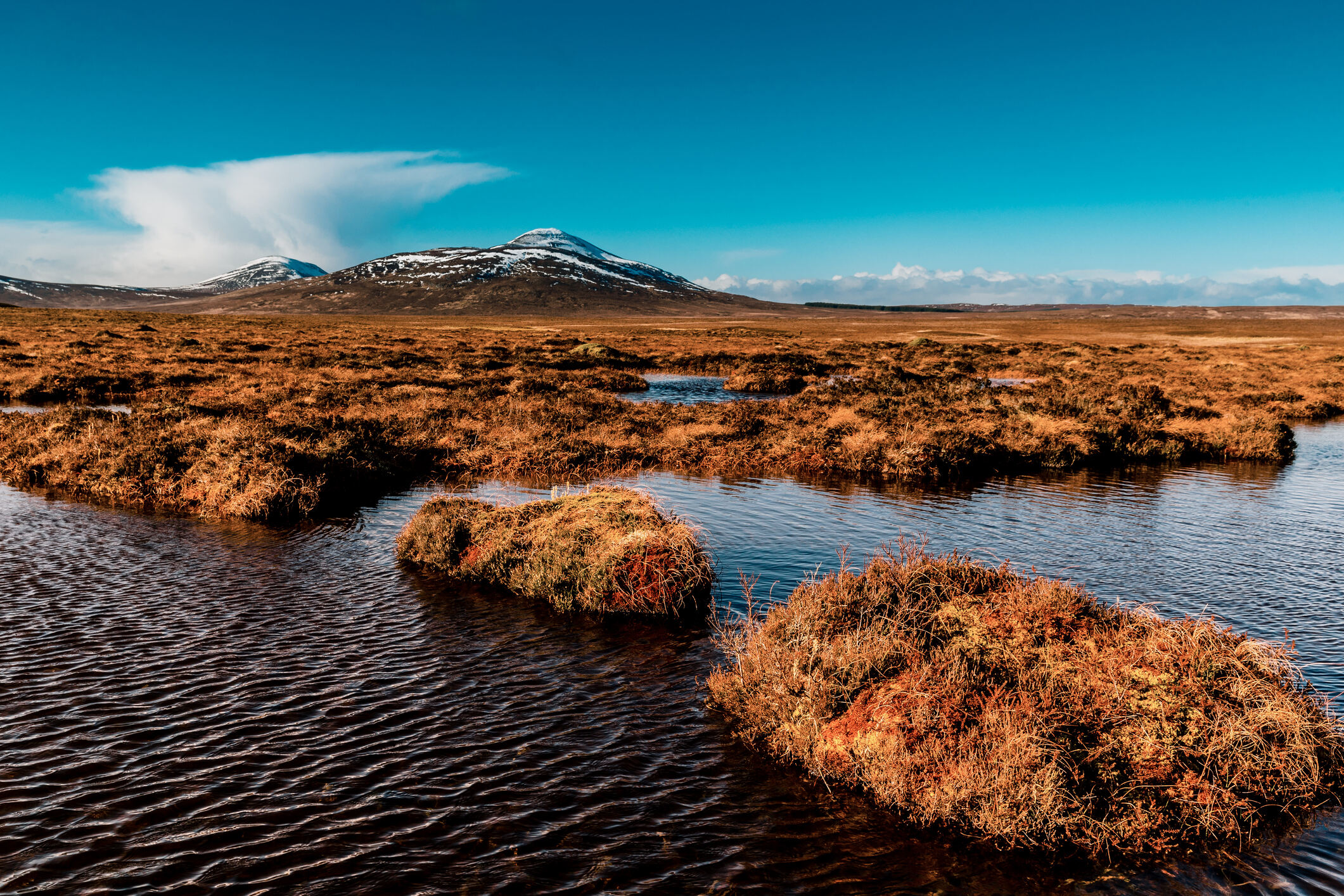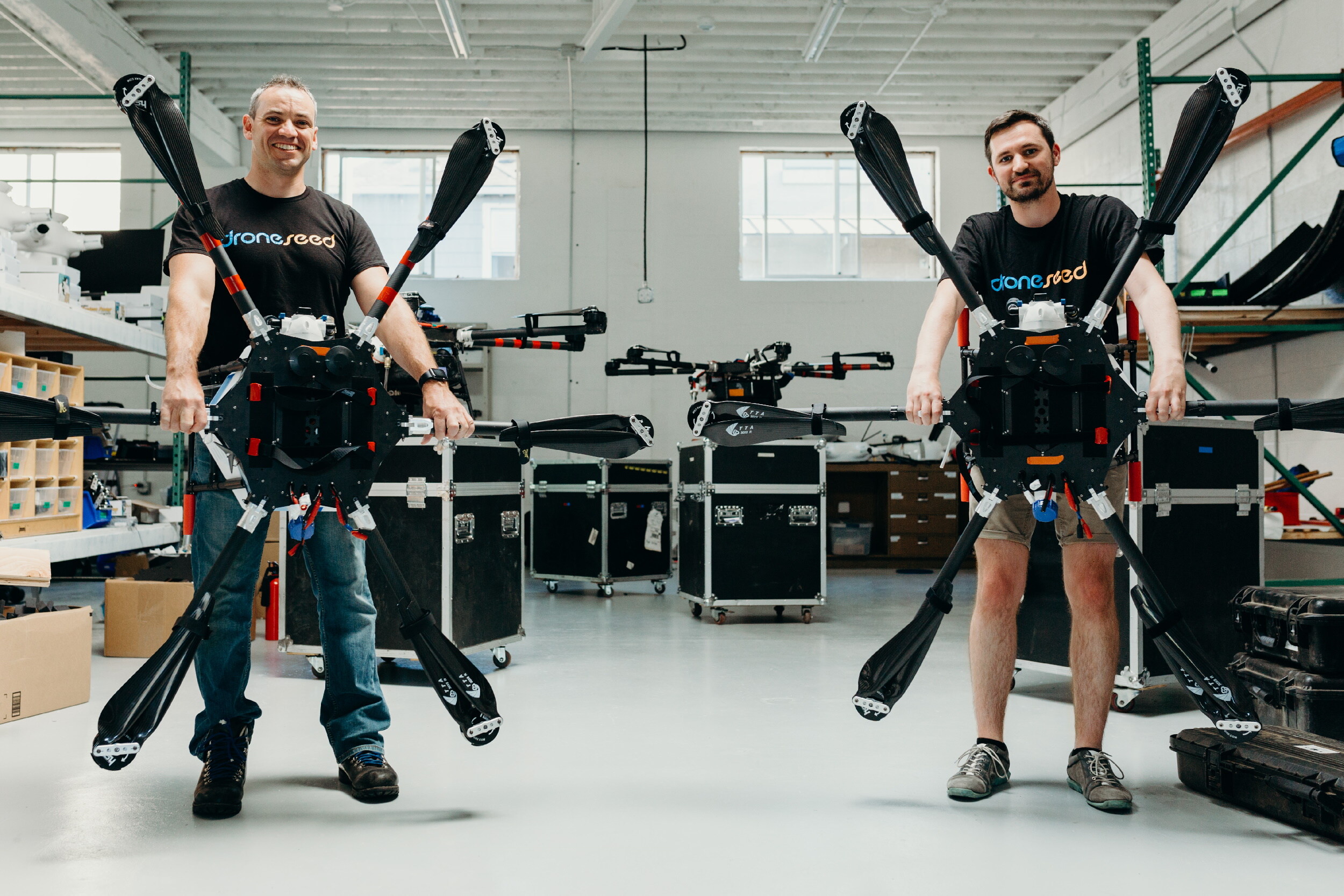Issue 59

View over the peat bogs towards Ben Griam Beag, at Forsinard, in the Flow Country of the Sutherland region of Scotland.
lucentius via Getty Images Scott Hannan
Scott Hannan
Peat bog restoration for biodiversity and carbon sequestration - Led by the Irish conservation charity Ulster Wildlife, a ten-year project is underway to restore 30 hectares of peatland in County Tyrone, Ireland. The area, which had been drained and degraded for the harvesting of turf, will now serve as an education and demonstration hub for the surging number of peat bog restoration projects in Ireland and Scotland, where the ecosystems also form part of a complex cultural identity. Peat bogs are an extremely efficient and effective carbon storage ecosystem, serving as valuable sites for water filtration and plant and animal biodiversity. Similar restoration projects are happening in the United States as well. Scientists from the Nature Conservancy are restoring and studying peat bogs in Minnesota and highlighting the renewed understanding of their beautiful and important role in maintaining global ecosystem health.
 Benjamin Felser
Benjamin Felser
The First Indigenous Marine Stewardship Area in the U.S. - In an unprecedented collaboration to advance conservation efforts and address climate impacts, three federally recognized Tribal Nations recently designated 700 mi2 (1,813 km2) of Northern California coastline as the Yurok-Tolowa-Dee-ni’ Indigenous Marine Stewardship Area (IMSA). This project brings together the Resighini Tribe of Yurok People, Tolowa Dee-ni’ Nation, and Cher-Ae Heights Indian Community of Trinidad Rancheria through the recently launched Tribal Marine Stewards Network. The protected region stretches from the California-Oregon border to the town of Trinidad in Humboldt County and includes up to three nautical miles from the shore. Northern California’s abalone species are listed as critically endangered due to overfishing, a 96 percent decline in their kelp forest environments, and global warming. Given the documented success of indigenous coastal conservation leadership and the broader significance of Marine Protected Areas, this initiative is a crucial step in protecting ecologically and culturally quintessential species from abalone and kelp to clams, smelt, threatened salmon, shorebirds, and more. The movement builds on indigenous stewardship projects further north, including the Tsawout Nation’s 60 mi2 QEN’T Indigenous Protected and Conserved Area in British Columbia and the previously reported Yurok-led dam demolition project on the Klamath River, which will flow into the northern section of the IMSA.
 Claire Krummenacher
Claire Krummenacher
The innovators at the forefront of reimagined air conditioning - As the planet warms, the worldwide demand for air conditioning is expected to triple by 2050. However, given that AC already accounts for ten percent of global energy use, several companies are working to make major changes to avoid further increasing greenhouse gas emissions. One example, Gradient, has partnered with the New York City Housing Authority to offer all-weather units that offer a 30-45% reduction in overall emissions, remove dependence on gas heating, and use a refrigerant with a 70 percent lower global warming potential than the industry standard. Meanwhile, a team at Harvard has designed an evaporative cooling system whose specially coated ceramic eliminates the need for refrigerants. Since much of the power that air conditioning demands goes toward managing humidity rather than temperature, companies like Transaera have aimed to decrease energy use by developing a drying agent-based system that pulls moisture from the air and enables units to work efficiently even in humid conditions. On a larger scale, software companies like Parity are decreasing unnecessary energy expenditure by using data on weather, occupancy, and building design to manage HVAC for entire buildings remotely. Several of these companies hope to expand into at-risk areas where temperature increases are most extreme to provide more equitable AC coverage.
|
Take Action on Nexus Support our work Want the Waggle coming to your inbox instead? Click Here to Subscribe! |


